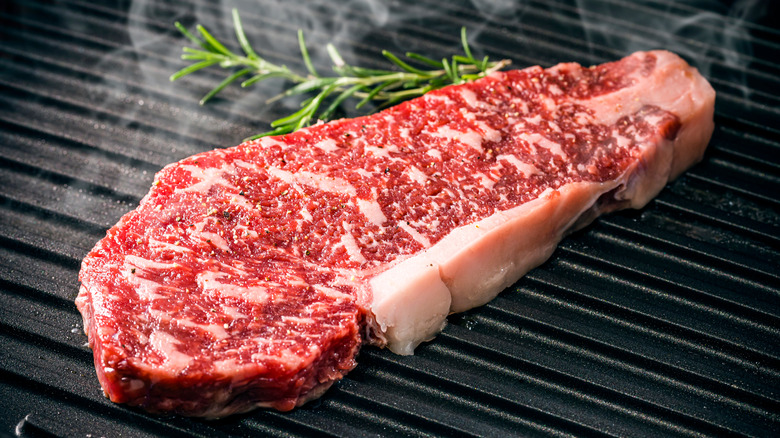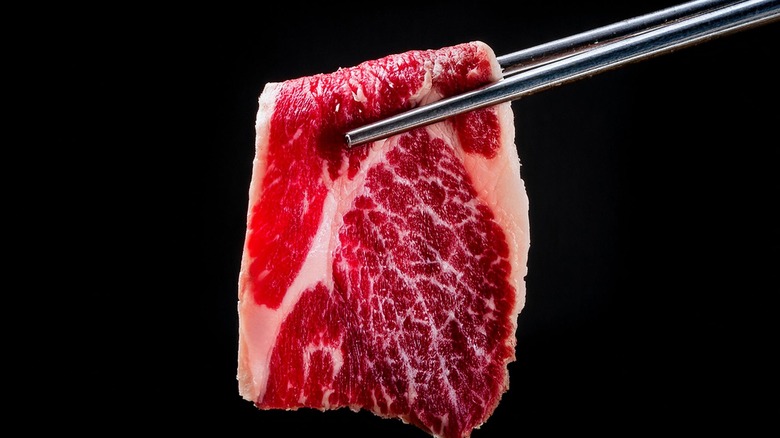How Is American Wagyu Beef Different Than Japanese Wagyu?
The meat begins to purr right as it hits the pan; the sizzle of a cut of wagyu as it cooks is a calm whisper that promises the same melting tenderness when it is ready to eat. The fat quickly gives way to the heat, melting into the meat as it cooks. When the cut is ready, one thing will surely become clear: Few cuts of beef are as mouth-watering as wagyu. But is this wagyu American or Japanese?
As wagyu becomes increasingly popular in the United States, it also becomes more important to understand how not all wagyu is the same. The difference between American and Japanese wagyu beef comes down to genetics; due to different breeding and caretaking practices, Japanese wagyu is defined by its quality, rich tenderness and marbling, while American wagyu features a more hearty flavor enhanced by its marbling. Don't be afraid to ask what kind of wagyu experience awaits, as either cut is sure to please.
Raising wagyu
In the latter half of the 19th century, Japan started importing a wide range of cow breeds from Europe and Asia, and after centuries of crossbreeding, the wagyu breed was created. From 1975 to 1990, wagyu was imported to the United States from Japan, and a starting population of American wagyu was established through crossbreeding wagyu with angus cattle. As a result, American wagyu yields meat with Japanese wagyu's tenderness and marbling while maintaining angus beef's taste and texture.
Proximity to fields ensures Japanese wagyu always have premium feed sources that meet their dietary needs. In contrast, whether the vegetarian diet of American wagyu consists of wheat or corn depends on what crops they are nearest to.
Japanese wagyu cattlemen take care to protect the pedigree and quality of their cattle. They do this by not crossbreeding Japanese wagyu, being attentive to the physical condition of individual cows, and feeding them for 30 months — 10 months longer than cattle raised elsewhere. These factors contribute to how Japanese A5 wagyu beef receives the highest grade in its class.
The science behind marbling
With the initial import of wagyu cows to the U.S., cattlemen noticed that even when fed the same diet, wagyu marbling and fatty acid composition was still better than that of angus cattle. Because Japanese wagyu has up to 300% more monounsaturated fat than other cow breeds, it has more fat melting at a lower temperature when cooking. This impact is tangible; Japanese wagyu is noticeably more melt-in-your-mouth than other types of beef.
Wagyu beef also contains 30% more conjugated linoleic acid, which increases intramuscular fat in meat. Because there is more of this acid in wagyu beef, the beef features more marbling. These characteristics of the fat make it imperative to find the best temperature to cook a beautiful piece of wagyu to maximize the flavor.
While American wagyu still has wagyu marbling, it is to a lesser degree than Japanese wagyu. This difference makes American wagyu sport a hearty angus flavor instead of the delicate richness of Japanese wagyu. Whether you favor American or Japanese wagyu, remember not to use it in a patty; using wagyu in burgers makes chefs and butchers cringe.


